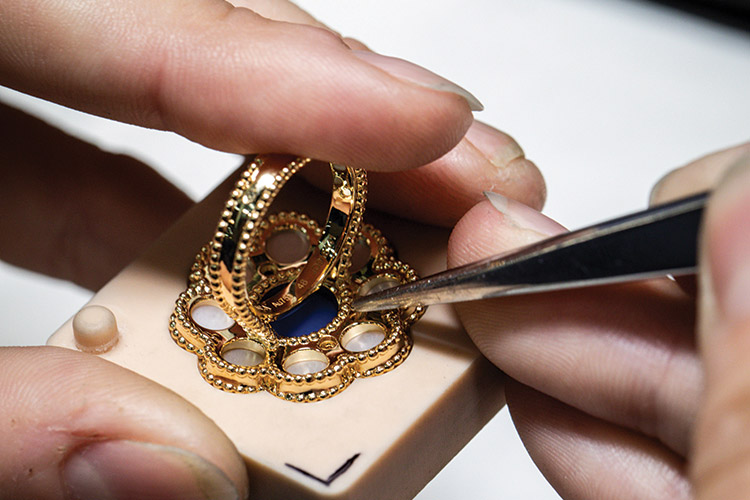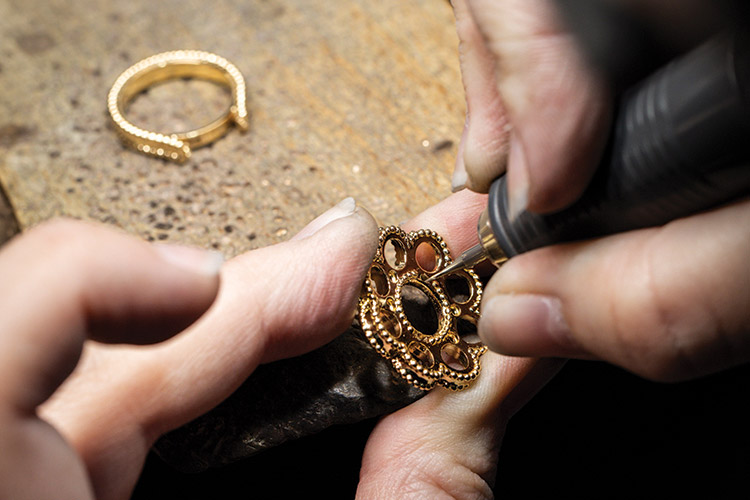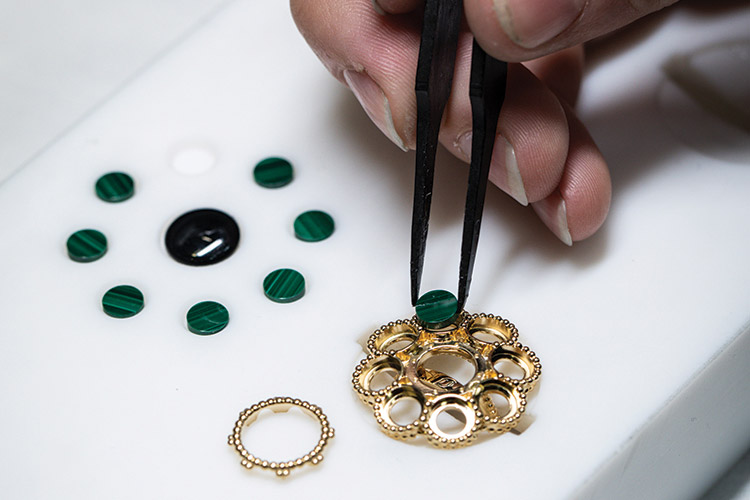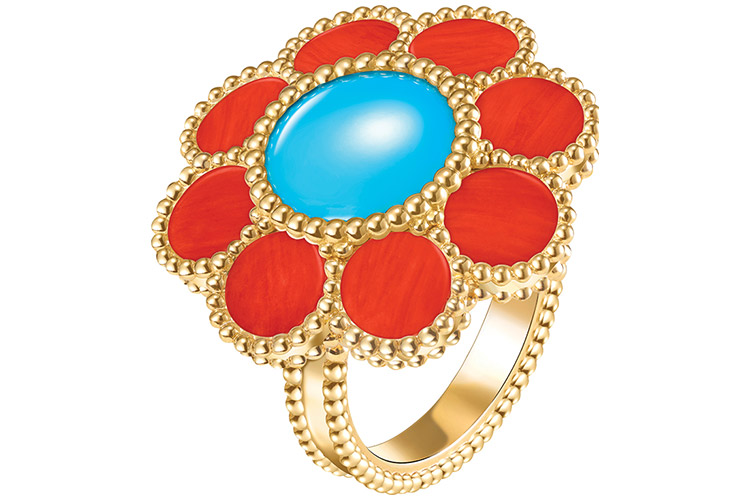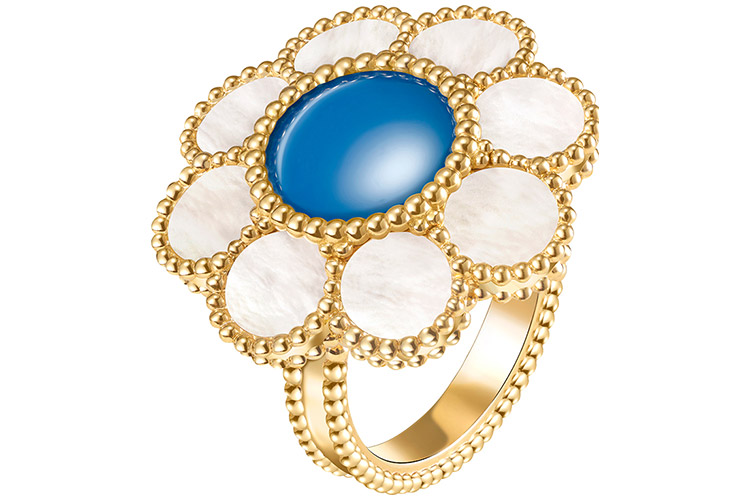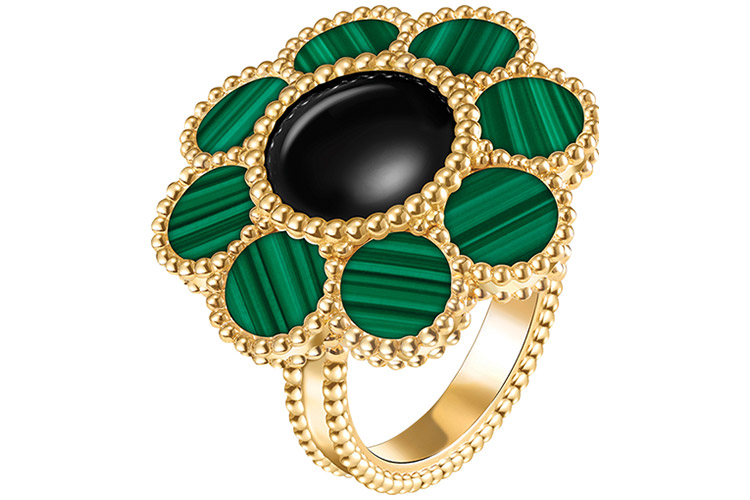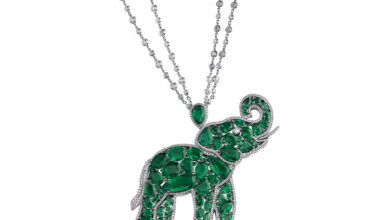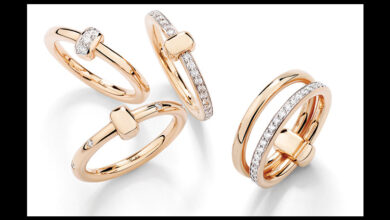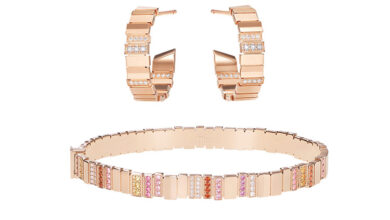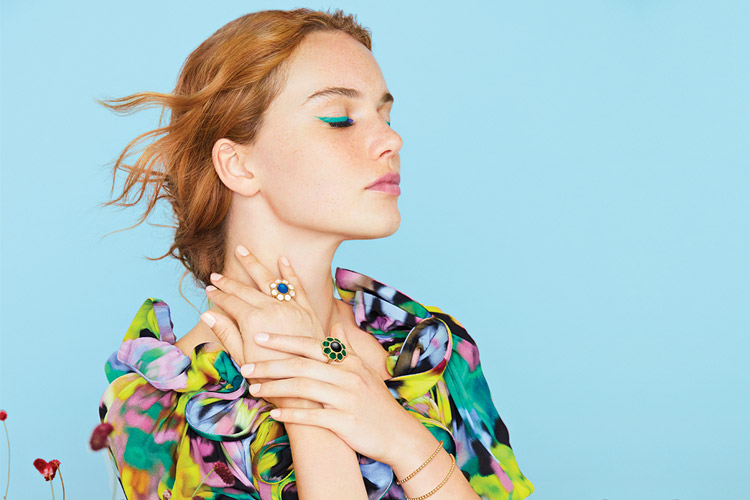
In keeping with one of its most emblematic themes, Van Cleef & Arpels is expanding its poetic garden with the Pâquerette rings. Under the warmth of sunlight, yellow gold and ornamental stones come together to echo nature’s vitality and grace. This year’s Summer campaign highlights colourful flowers through a great variety of aesthetics, stones, and functions
A source of inspiration dear to the Maison, flora reveals its most beautiful finery as summer is approaching. The three novelties that recall the silhouette of a daisy seamlessly enrich this bejewelled selection, opening a new chapter of Van Cleef & Arpels’ floral story.
A new design is revealed through three yellow gold variations adorned with the vivid hues of ornamental stones inspired by a summer garden. The depth of onyx meets malachite’s green shade enlivened by harmonious light and dark bands. The liveliness of turquoise unites with coral’s warmth while the vibrancy of blue agate is highlighted by white mother-of-pearl’s sheen.
These bold yet elegant contrasts adorn the hand with a stylised motif of generous proportions that also stands out for its composition comprised of circular patterns. This design sparks bright combinations with the Maison’s jewellery collections presenting golden beads and ornamental stones such as Perlée and Alhambra to suit the wearer’s mood. All of them are bordered with golden beads, a signature motif of the Maison. Enhancing each petal as well as the flower’s centre and the shank itself, they enhance the piece’s radiance and roundness.
Forged by more than 100 years of expertise, Van Cleef & Arpels’ taste and savoir-faire is reflected in the stone selection of these novelties. Onyx, malachite, white mother-of-pearl, blue agate, turquoise and coral are carefully selected by the Maison’s expert gemmologists who seek stones presenting a vivid, homogenous colour.
Prior to the assembling process, each piece is skilfully cut, in the form of flat discs for the petals and cabochons featuring a subtle dome for the motif’s centre. The pairing step is crucial as well to ensure the flower displays a seamless rendering. On the malachite and onyx variation, the malachite parts are positioned in such a way that the stone’s veins are oriented in different, yet not random, directions, sparking a sense of dynamism that echoes nature’s vitality.
The flower motif is obtained thanks to the ancestral “lost wax casting” technique. Each element is then reworked manually by the jeweller. Bordered with golden beads, the yellow gold structure is polished several times: before the assembling and after, as the last step. Embodying the Maison’s attention to detail, mirror polishing is performed between the golden beads, on the front face of the shank as well as its back face to enhance the brilliance of the ensemble and to ensure the piece always appears in the best light.
A time-honoured theme for Van Cleef & Arpels, the vitality of nature has enlivened the Maison’s creations since its foundation in 1906. Whether stylised or figurative, bejewelled flowers have blossomed in the Maison’s garden with a great variety of aesthetics and precious or ornamental stones. They are notably featured within a precious fresco – as in the Entwined Flowers, Red and White Roses bracelet, 1924 – or as bouquets on the 1930s Hawaii pieces or individual flowers as seen on the 1974 Saint Louis clips.
Among all the flowers covered by the Maison, around twenty species have been particularly brought to the fore on its High Jewellery, Jewellery and Watchmaking creations, such as lily-of-the-valley, poppies, peonies, roses, but also daisies which first adorned accessories in the 1950s. In turn stylised or figurative, the 1951 Daisy clip and ring were crafted in yellow gold, with a remarkable polishing work already present at that time. Today, the new Pâquerette rings enrich this floral universe with a graphic, colourful interpretation that blends golden beads and ornamental stones.
